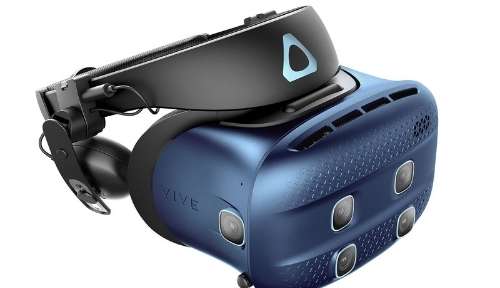When I first tested out Oculus Link on my Oculus Quest 1, I was absolutely blown away by how well it worked.
Coming straight off an original consumer model Rift, it felt like an upgrade, despite running through a convoluted software solution. I tried out everything, including SteamVR titles such as Half-Life Alyx and other Steam games such as Star Wars Squadrons.
They all worked perfectly, but then without any warning, things began going wrong—stuttering sound, choppy framerates and a computer that could barely keep up.
PC VR titles running through the Oculus Dash or through the Epic Game Store worked perfectly, it was only SteamVR titles that caused problems. This problem remained after a complete system reinstallation and, now, an entirely new computer.
With some of my favourite VR games now completely unplayable, I decided to take a serious look at what’s going wrong with SteamVR using Oculus Quest.
What’s Going Wrong?
Searching through various forum posts on Steam and beyond, it’s clear that I’m far from the only person who is struggling with bad performance using Oculus Link with SteamVR titles.
More importantly, it doesn’t seem to be an issue strictly related to the Quest HMDs. There are also users complaining about the issue using the Rift S.
Now, that’s not to say that the cause of the problem with both Oculus HMD series is the same, just that it’s not simply the more complicated render pipeline of the Quest that’s to blame.
Personally, I think the big problem is that non-Oculus VR software can’t access the headset directly. It all has to interface with the Oculus Dash and software layer.
Which means that either Steam or Oculus can break things when they make a change on either side, and then the other company has to find a way to make things work again.
As for the specific things that are going wrong, I experience very poor framerates and an inability to render the scene in time for my head movement. Sound also stretches and distorts over the Oculus headset. A problem that goes away if I switch to headphones that are directly connected to the PC.
SteamVR Home is also incredibly laggy, while Oculus Home isn’t. Here are some of the possible fixes I’ve found in my searches online, brought together so that you don’t have to go hunting as I did.
Doing Double Duty
First of all, there’s a theory that running SteamVR on top of Oculus Dash might be too much for computers with relatively little RAM.
Both of my computers have 16GB of RAM, and neither are overloaded during gaming, so I don’t think it’s an issue in general, but those running 8GB or (gasp!) less than that could be in for a bad time here.
One thing that seems to help a bit with this for me is to launch SteamVR Home and then launch SteamVR games from there.
In the past, I’d opened the Virtual Desktop from within the Oculus environment and then started the Steam game from the Steam client.
Doing it directly from SteamVR Home seems faster and smoother, but honestly, it could be the placebo effect. Can’t hurt to try though!
Switching to the Beta Channel
Some users have reported that activating the Beta channel in Steam seems to resolve the issue for them. This is probably because the Steam beta client has the latest fixes and features, which most likely includes upcoming fixes for SteamVR.
The problem with this solution is that it only works when a new fix under testing in the beta addresses Oculus-related issues. There’s no harm in trying it when you run into trouble though.
Simply go to Steam>Settings>Account and then opt-in for the beta update under beta participation.
USB 2.0 Is Not The Problem
Like it did for me, it might occur to you that using a USB 2.0 cable (such as the included one for the Quest 1) is the issue. Perhaps the bandwidth is being exceeded?
Well, I swapped out the USB 2.0 cable for a USB 3.1 model, and it made not one whit of difference. Other than the normal improvements you get, that is.
Besides, remember that native Quest PC VR games work just fine on either cable.
Random Resolutions in SteamVR
This is actually the solution that resolved the issue for me. It seems that at some point SteamVR has developed a bug where it scales up the render resolution of games so much that the PC itself can’t keep up.
To apply this fix, I launched SteamVR Home. Then I went to the settings menu, looking for video settings and disabled “Auto” for resolution scaling. Then I made sure it was set to 100% You can make it less of course.
This is the global setting; some games like Squadrons has its own internal setting as well. Just make sure all resolution scaling is set to an appropriate scale for your hardware. Once I did this, Half-Life Alyx was butter smooth!
Link Is Going Native On Quest
The best solution would obviously be to give SteamVR direct access to the Oculus hardware, but that’s probably not going to happen any time soon.
I’d be very interested to hear whether you’ve also been having issues using an Oculus headset with SteamVR titles recently and if you have additional fixes to suggest to get things working the way they are meant to.







